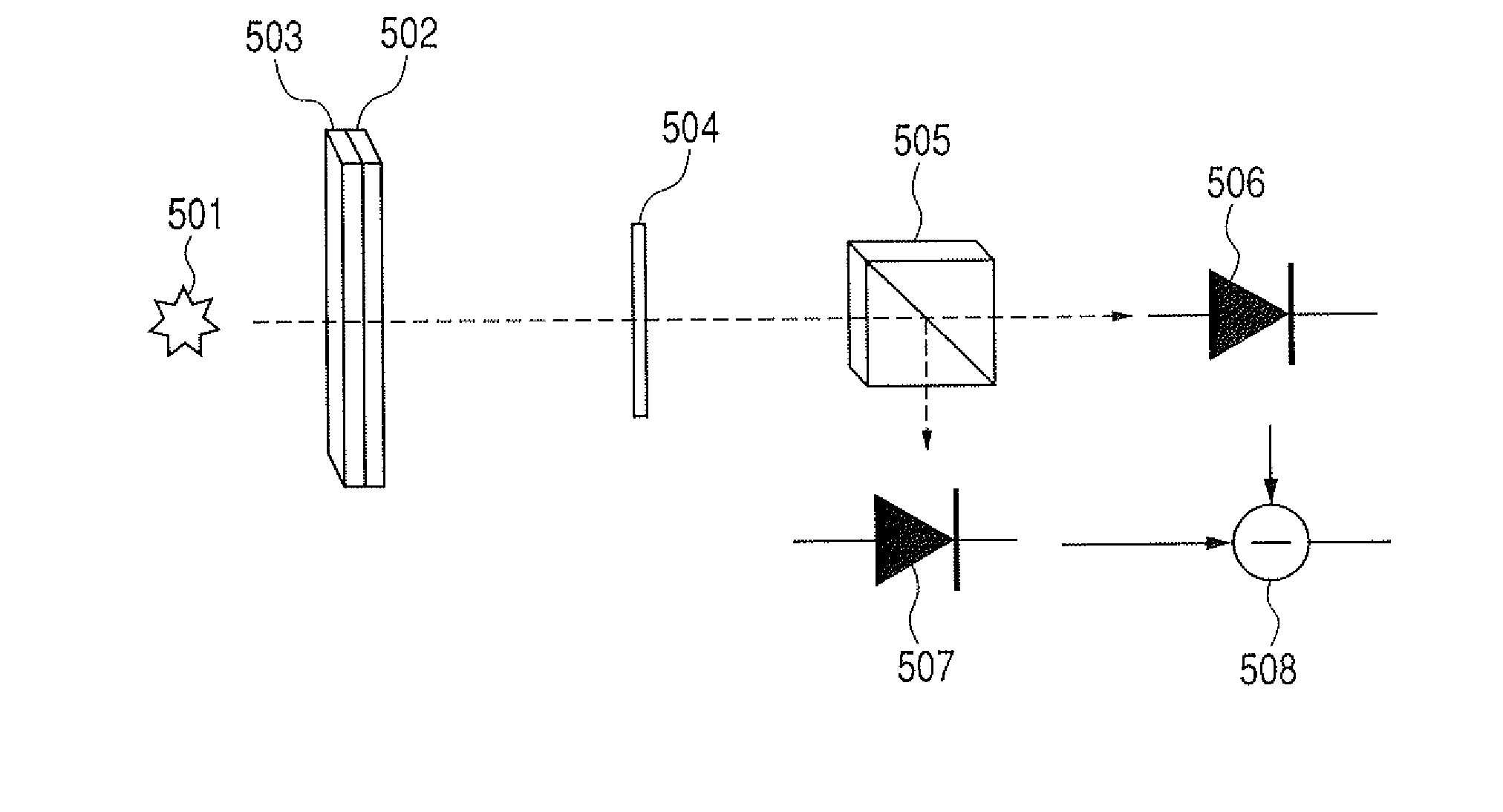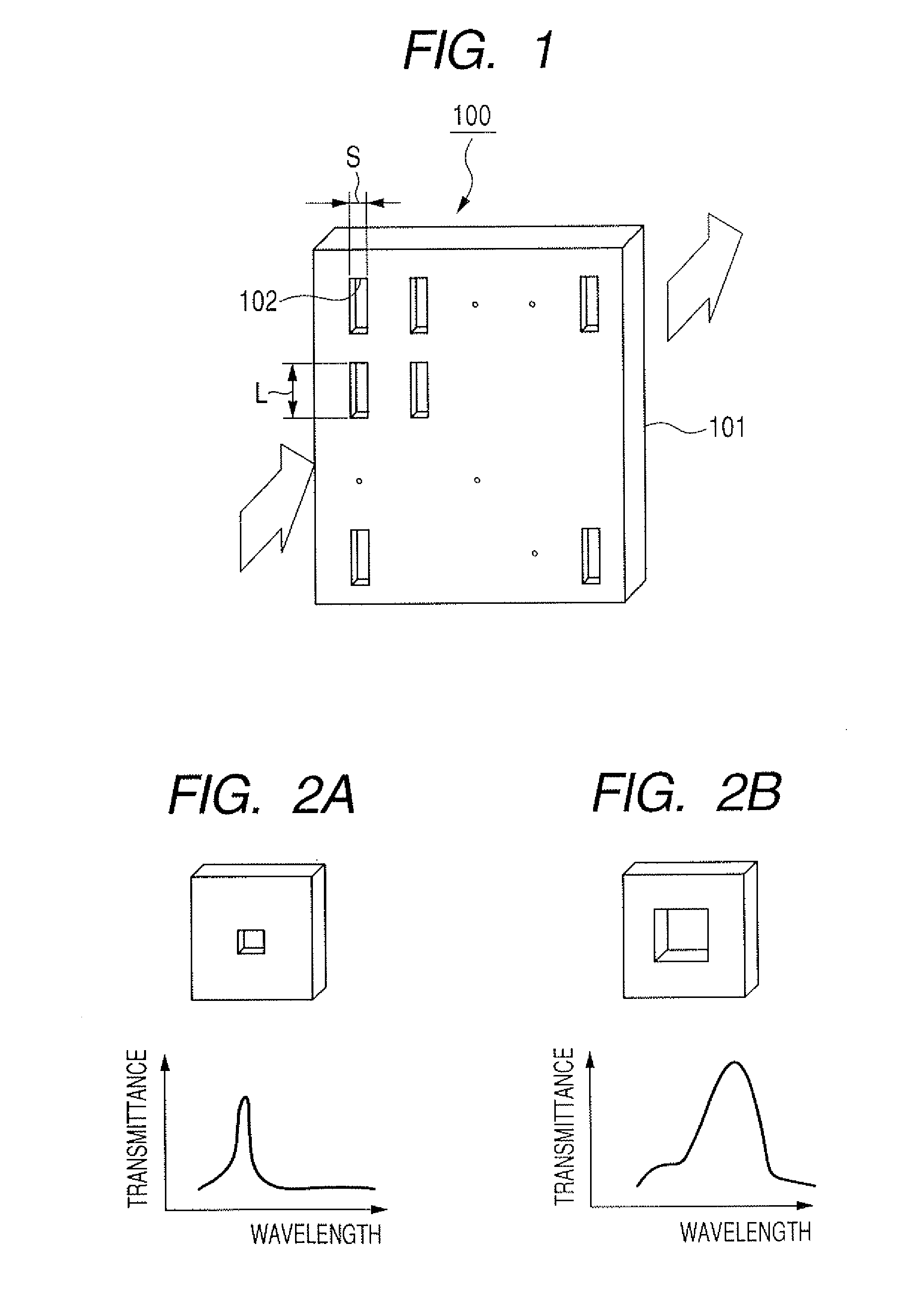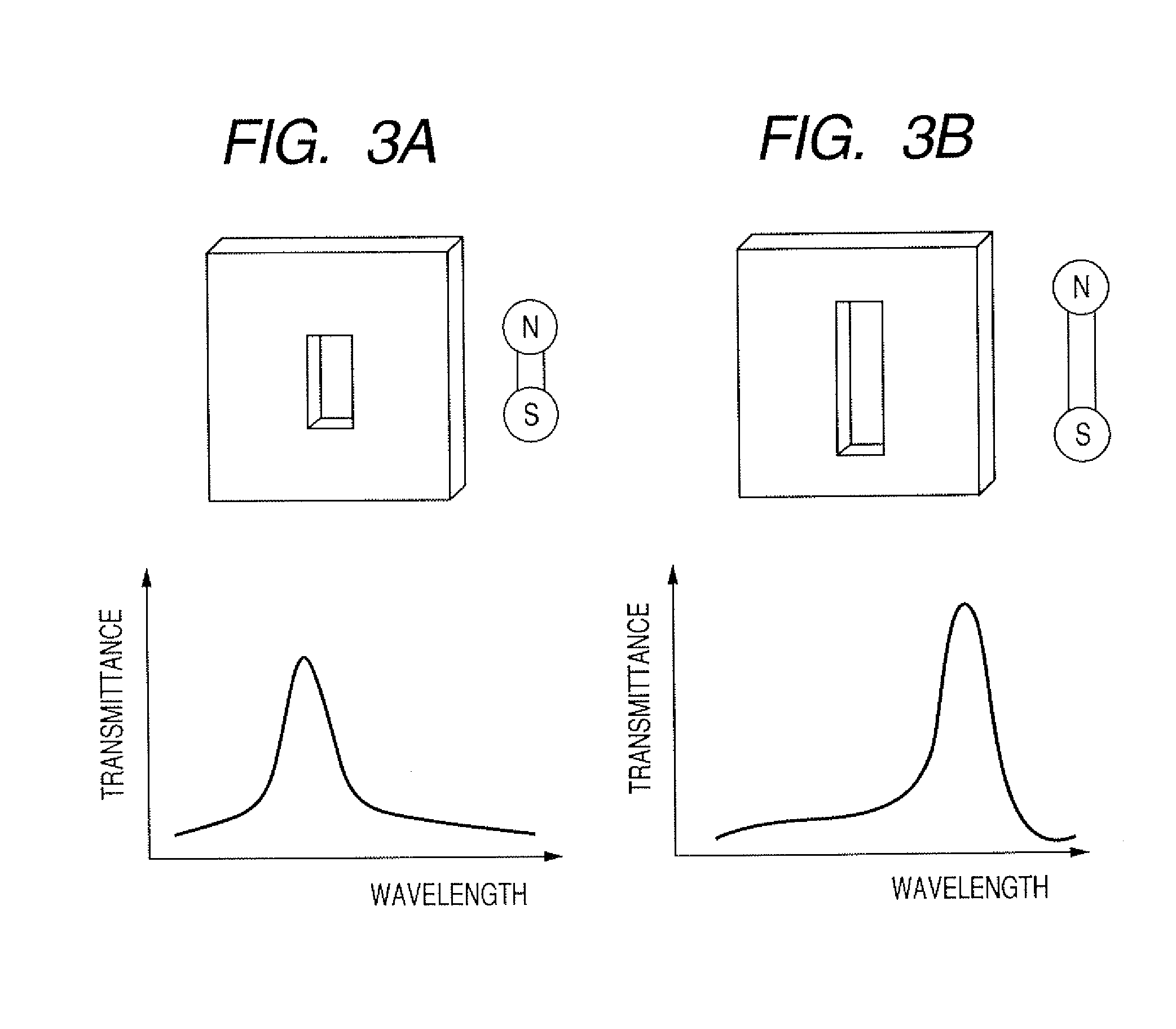Method for designing light transmission device, optical element and sensor
a technology of light transmission device and optical element, applied in the direction of optical radiation measurement, instruments, polarising elements, etc., can solve the problems of aperture array, unavoidable broadening of transmission spectrum, and unavoidable decrease of transmittan
- Summary
- Abstract
- Description
- Claims
- Application Information
AI Technical Summary
Benefits of technology
Problems solved by technology
Method used
Image
Examples
embodiment i-1
[0085]FIG. 5 illustrates a color filter for use in color separation, which is an example of a light transmission device obtained by using the present invention.
[0086]When light is incident on a rectangular aperture array 503 which is a set of rectangular apertures 502 formed in a metal thin film 501, localized plasmon is excited in an interface of a metal. Then, the light passes through the aperture in a form of plasmon, is united with propagation light on the back face, and transmits.
[0087]Transmitted light has a peak wavelength depending on a shape of a rectangular aperture 502, because of being affected by localized plasmon resonance. Rectangular apertures 502 are arranged in a two-dimensional array form, but may also be arranged in a one-dimensional array form. The rectangular aperture 502 includes a plurality of types of the rectangular apertures 502R, 502G and 502B, of which the dimension of long side are different from the others. A rectangular aperture array 503 includes rec...
embodiment i-2
[0093]FIG. 7 illustrates a conceptual diagram of an optical switching element which is an example of a light transmission device obtained by using the present invention.
[0094]The optical switching element polarizes white light emitted from a light source 706 by using a polarizer 702, and makes the polarized light pass through a rectangular aperture array 703. The optical switching element can change the chromaticness of transmitted light by polarizing the while light by using the polarizer 702.
[0095]In the present embodiment, a short side dimension of a rectangular aperture is determined so as not to be excessively small in comparison with a wavelength of irradiation light, and so as to give a necessary intensity of transmitted light even to a polarized light in a minor axis direction.
[0096]A rectangular aperture (not shown) in a rectangular aperture array 703 has characteristics of making polarized light pass therethrough in different manners depending on a polarization direction o...
embodiment i-3
[0102]FIG. 10 illustrates a conceptual diagram of an example of a chemical sensor device by using the present invention.
[0103]The chemical sensor device makes a light source 1006 arranged on an incident plane side of a rectangular aperture array 1003 which is a light transmission device, project light toward the rectangular aperture array 1003, and makes a device 1004 for detecting a spectrum of the transmitted light, which is placed on the exit plane side of the rectangular aperture array 1003, receive the transmitted light.
[0104]An object 1005 to be measured is placed on a rectangular aperture array 1003 so as to closely contact with each other. The chemical sensor device makes a device 1004 for detecting the spectrum obtain a transmission spectrum, and detect a change in a peak wavelength or peak intensity of transmitted light to chemically sense a substance to be inspected.
[0105]The chemical sensor device can sense the substance 1005 to be inspected at high sensitivity, by makin...
PUM
 Login to View More
Login to View More Abstract
Description
Claims
Application Information
 Login to View More
Login to View More - R&D
- Intellectual Property
- Life Sciences
- Materials
- Tech Scout
- Unparalleled Data Quality
- Higher Quality Content
- 60% Fewer Hallucinations
Browse by: Latest US Patents, China's latest patents, Technical Efficacy Thesaurus, Application Domain, Technology Topic, Popular Technical Reports.
© 2025 PatSnap. All rights reserved.Legal|Privacy policy|Modern Slavery Act Transparency Statement|Sitemap|About US| Contact US: help@patsnap.com



